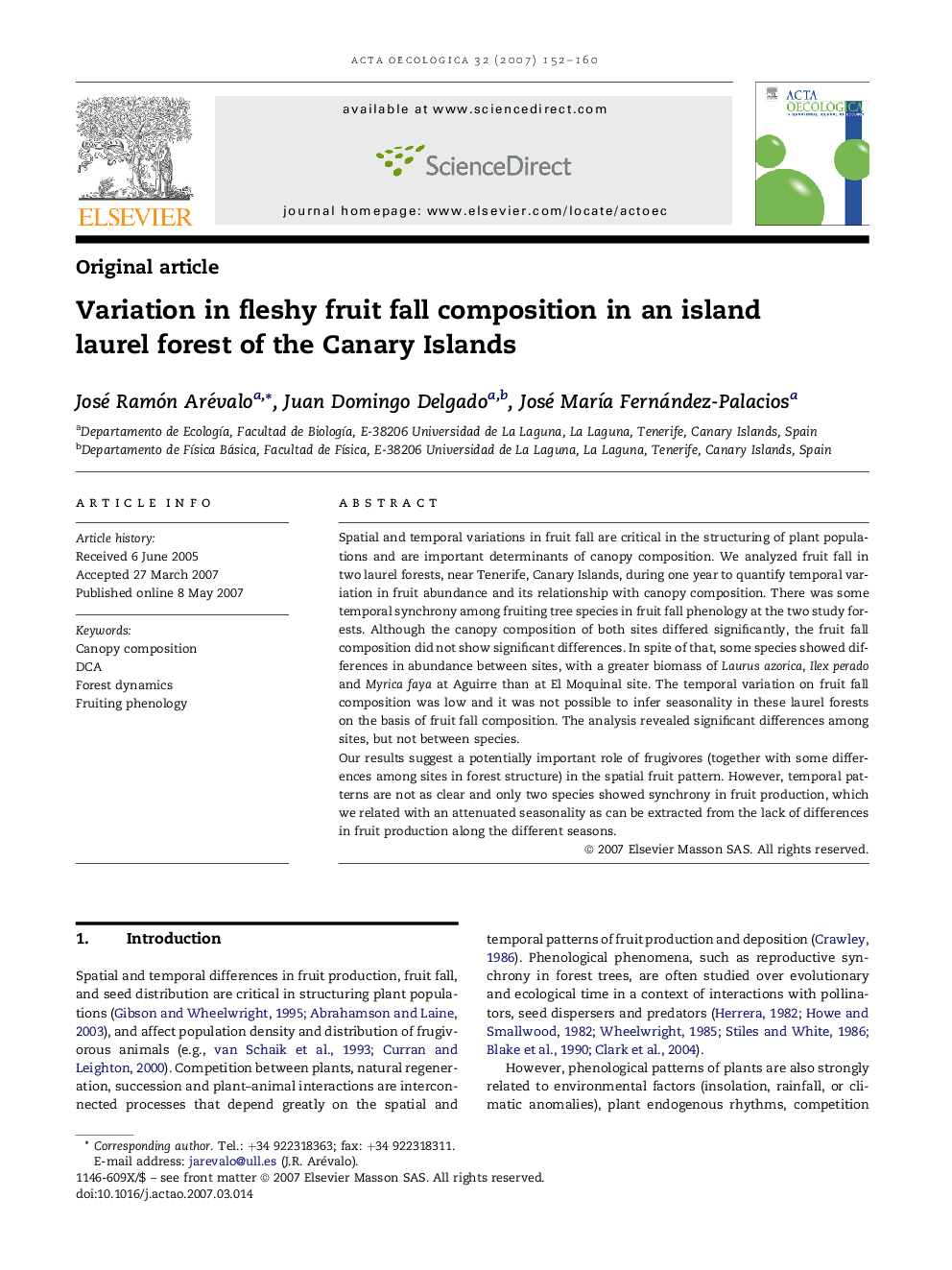| Article ID | Journal | Published Year | Pages | File Type |
|---|---|---|---|---|
| 4381534 | Acta Oecologica | 2007 | 9 Pages |
Spatial and temporal variations in fruit fall are critical in the structuring of plant populations and are important determinants of canopy composition. We analyzed fruit fall in two laurel forests, near Tenerife, Canary Islands, during one year to quantify temporal variation in fruit abundance and its relationship with canopy composition. There was some temporal synchrony among fruiting tree species in fruit fall phenology at the two study forests. Although the canopy composition of both sites differed significantly, the fruit fall composition did not show significant differences. In spite of that, some species showed differences in abundance between sites, with a greater biomass of Laurus azorica, Ilex perado and Myrica faya at Aguirre than at El Moquinal site. The temporal variation on fruit fall composition was low and it was not possible to infer seasonality in these laurel forests on the basis of fruit fall composition. The analysis revealed significant differences among sites, but not between species.Our results suggest a potentially important role of frugivores (together with some differences among sites in forest structure) in the spatial fruit pattern. However, temporal patterns are not as clear and only two species showed synchrony in fruit production, which we related with an attenuated seasonality as can be extracted from the lack of differences in fruit production along the different seasons.
